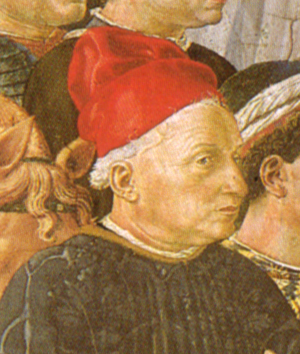Republic of Florence







Republic of Florence
The Republic of Florence (Italian: Repubblica Fiorentina) was a medieval and early modern state that was centered on the city of Florence in Tuscany, Italy. The republic was established in 1115, when the Florentine people rebelled against the Margraviate of Tuscany following the death of Matilda of Tuscany. It lasted until 1532, when the Medici family transformed it into the Duchy of Florence.
History[edit]
Early Republic[edit]
The early years of the Republic of Florence were marked by internal strife and power struggles among the city's leading families. The Guelphs and Ghibellines were two factions that vied for control, with the Guelphs generally supporting the Pope and the Ghibellines supporting the Holy Roman Emperor. The Guelphs eventually gained the upper hand, leading to a period of relative stability and prosperity.
Economic Growth[edit]
Florence became a major center of trade and finance during the 13th and 14th centuries. The city's wool and textile industries were particularly important, and Florentine bankers established branches throughout Europe. The Florin, a gold coin minted in Florence, became a standard currency in international trade.
Cultural Flourishing[edit]
The Republic of Florence is perhaps best known for its cultural achievements during the Renaissance. The city was home to many of the era's greatest artists, writers, and thinkers, including Dante Alighieri, Petrarch, Giovanni Boccaccio, Leonardo da Vinci, Michelangelo, and Niccolò Machiavelli. The Medici family, who were prominent patrons of the arts, played a significant role in fostering this cultural flourishing.
Political Structure[edit]
The government of the Republic of Florence was a complex system of councils and magistracies. The highest executive authority was the Signoria of Florence, a group of nine officials known as the Priori. The Priori were chosen from the city's guilds and served for a two-month term. The Gonfaloniere of Justice was the head of the Signoria and held significant power.
Decline and Fall[edit]
The Republic of Florence faced numerous challenges in the late 15th and early 16th centuries, including internal conflicts, external threats, and economic difficulties. The rise of the Medici family, who gained control of the city in 1434, marked the beginning of the end for the republic. In 1532, Pope Clement VII (a Medici) and Holy Roman Emperor Charles V established the Duchy of Florence, effectively ending the republic.
Legacy[edit]
The Republic of Florence left a lasting legacy in the fields of art, literature, and political thought. Its contributions to the Renaissance had a profound impact on the development of Western culture. The city's architectural and artistic heritage continues to attract millions of visitors each year.
Related Pages[edit]
- Florence
- Medici family
- Renaissance
- Guelphs and Ghibellines
- Signoria of Florence
- Duchy of Florence
- Pope Clement VII
- Holy Roman Emperor Charles V
This article is a Italian history stub. You can help WikiMD by expanding it!
Ad. Transform your life with W8MD's Budget GLP-1 injections from $75


W8MD offers a medical weight loss program to lose weight in Philadelphia. Our physician-supervised medical weight loss provides:
- Weight loss injections in NYC (generic and brand names):
- Zepbound / Mounjaro, Wegovy / Ozempic, Saxenda
- Most insurances accepted or discounted self-pay rates. We will obtain insurance prior authorizations if needed.
- Generic GLP1 weight loss injections from $75 for the starting dose.
- Also offer prescription weight loss medications including Phentermine, Qsymia, Diethylpropion, Contrave etc.
NYC weight loss doctor appointmentsNYC weight loss doctor appointments
Start your NYC weight loss journey today at our NYC medical weight loss and Philadelphia medical weight loss clinics.
- Call 718-946-5500 to lose weight in NYC or for medical weight loss in Philadelphia 215-676-2334.
- Tags:NYC medical weight loss, Philadelphia lose weight Zepbound NYC, Budget GLP1 weight loss injections, Wegovy Philadelphia, Wegovy NYC, Philadelphia medical weight loss, Brookly weight loss and Wegovy NYC
|
WikiMD's Wellness Encyclopedia |
| Let Food Be Thy Medicine Medicine Thy Food - Hippocrates |
Medical Disclaimer: WikiMD is not a substitute for professional medical advice. The information on WikiMD is provided as an information resource only, may be incorrect, outdated or misleading, and is not to be used or relied on for any diagnostic or treatment purposes. Please consult your health care provider before making any healthcare decisions or for guidance about a specific medical condition. WikiMD expressly disclaims responsibility, and shall have no liability, for any damages, loss, injury, or liability whatsoever suffered as a result of your reliance on the information contained in this site. By visiting this site you agree to the foregoing terms and conditions, which may from time to time be changed or supplemented by WikiMD. If you do not agree to the foregoing terms and conditions, you should not enter or use this site. See full disclaimer.
Credits:Most images are courtesy of Wikimedia commons, and templates, categories Wikipedia, licensed under CC BY SA or similar.
Translate this page: - East Asian
中文,
日本,
한국어,
South Asian
हिन्दी,
தமிழ்,
తెలుగు,
Urdu,
ಕನ್ನಡ,
Southeast Asian
Indonesian,
Vietnamese,
Thai,
မြန်မာဘာသာ,
বাংলা
European
español,
Deutsch,
français,
Greek,
português do Brasil,
polski,
română,
русский,
Nederlands,
norsk,
svenska,
suomi,
Italian
Middle Eastern & African
عربى,
Turkish,
Persian,
Hebrew,
Afrikaans,
isiZulu,
Kiswahili,
Other
Bulgarian,
Hungarian,
Czech,
Swedish,
മലയാളം,
मराठी,
ਪੰਜਾਬੀ,
ગુજરાતી,
Portuguese,
Ukrainian